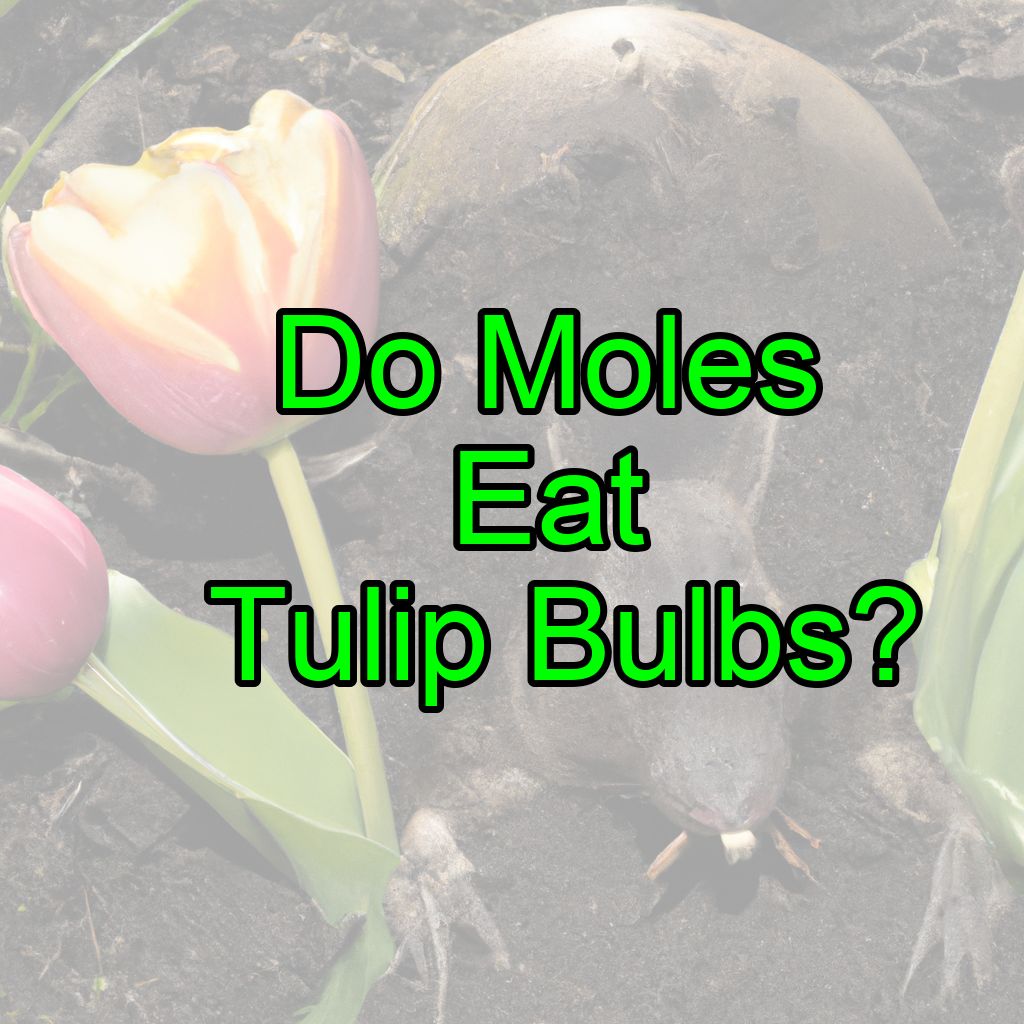Moles are cute little animals that can be a delight to watch in your backyard. However, if you are an avid gardener, you may have a love-hate relationship with these creatures.
Yes, moles can eat tulip bulbs. However, they primarily consume insects and worms. To protect your tulip bulbs, consider using physical barriers like wire mesh or planting deterrents like daffodils, which are unappealing to moles. Regularly check for signs of mole activity and take appropriate action to control their population in your garden.
On the one hand, they help to aerate the soil and keep it healthy. On the other hand, they can be a menace, tunneling through your garden beds and destroying your plants.
One question that most gardeners ask is whether moles eat tulip bulbs. In this post, we will explore this question and provide you with some answers.
When Do Moles Eat Tulip Bulbs?
Moles are active all year round, but they are more active during the spring and fall.
This is because during these seasons, the soil is moist, which makes it easier for them to tunnel through it.
Moles are carnivores and feed on insects, grubs, and earthworms.
However, they may also eat plant material, including tulip bulbs.
How Do Moles Eat Tulip Bulbs?
Moles are burrowing animals and spend most of their time underground.
They use their sharp teeth to dig through the soil and locate their prey.
When it comes to tulip bulbs, moles will dig them up and eat them.
They may also damage the bulbs while digging through the soil, which can cause the bulbs to rot.
Why Do Moles Eat Tulip Bulbs?
Moles eat tulip bulbs because they are a source of food. Tulip bulbs contain nutrients that moles need to survive, including carbohydrates and proteins.
In addition, moles are attracted to the smell of tulip bulbs, which makes them an easy target.
Implications for Backyard Owners
If you are a backyard owner and have tulip bulbs in your garden, it is important to be aware that moles may eat them.
While moles are generally not harmful to humans, they can cause damage to your garden.
If you notice signs of mole activity, such as tunnels and holes in your garden, it is important to take action to deter them.
Other Animals That Might Eat Tulip Bulbs
Moles are not the only animals that may eat tulip bulbs. Other animals that may eat tulip bulbs include squirrels, rabbits, and deer.
Squirrels and rabbits are known to dig up bulbs and eat them, while deer may graze on the foliage and flowers of tulip plants.
How To Keep Moles Out Of Your Yard!
There are several things that can be done to prevent moles from digging and eating stuff in your backyard. I will list some of the strategies below.
Also, you might want to check out all the things that attract moles to your yard in the first place!
1. Using ultrasonic sound (Best option)
Moles, have a very good hearing as they need to navigate with a very poor sight. This means that loud or consistent noises will scare them away or at least shorten their visits.
Check out my full buying guide for these ingenious ultrasonic repeller devices here!
One of my favorite technologies to keep moles away from my backyard is these cool solar-powered ultrasonic sound emitters that you can buy right from Amazon!
Because they sit in the ground where the sound waves are propagated downwards, they are perfect for scaring away moles!
In my experience, they really work, and the solar panels on top save you the time and money of changing batteries all the time.
They will also work against other rodents like groundhogs, mice, and rats!
2. Motion-activated sprinklers (Most efficient)
Like most animals, moles hate surprises, and they will run away if suddenly sprayed with water. I like this solution because it is humane, simple, effective, and does not require much time to set up.
The Havahart 5277 is a motion-activated sprinkler that is activated by the movement of animals up to 25 feet away and sprays them with a harmless water jet, frightening them off and keeping them at bay.
The included metal stake makes it easy to install in your garden, and the sprinkler can be rotated 180 degrees for maximum coverage.
Whereas it may not deter them from you yard all together, it will at least keep them in their tunnels!
3. Sprinkling natural repellents
Moles may be scared off by using natural scents such as coyote urine or predator scents.
They may also cause them to leave if there is a combination of sounds being played from a radio. The sounds include the sound of barking dogs and coyotes.
You can sprinkle dog hair, cayenne pepper or strong enteric oils and other natural repellents around the garden to keep the moles away.
See my complete list of humane ways to keep moles away from your yard for more tips and tricks!
4. Fencing around the garden
You can also fence around your garden to keep moles from entering the garden. It should be at least 3 feet deep and have a double row of fencing.
Moles are good diggers so it has to go underground or they may find a way into the garden even with the fences in place!
5. Using live traps
You can use a live trap to capture moles and move them to another area. Live trapping is currently the most humane way of mole control. Once you have removed all moles from an area, it is important to ensure that they do not come back by using fencing or other barriers to block access.
You can also just buy a live trap, as the sturdy metal ones shown here:
To lure the moles in, you can use one of the numerous favorite foods of moles or an optimized extra attractive formula like this one to make the catch even quicker!
## Conclusion
In conclusion, moles may eat tulip bulbs, especially during the spring and fall when they are more active. While moles are generally harmless to humans, they can cause damage to your garden beds.
If you are a backyard owner, it is important to be aware of this and take steps to deter them. By doing so, you can protect your tulip bulbs and enjoy a beautiful garden.













